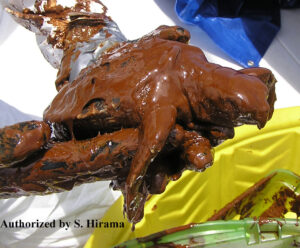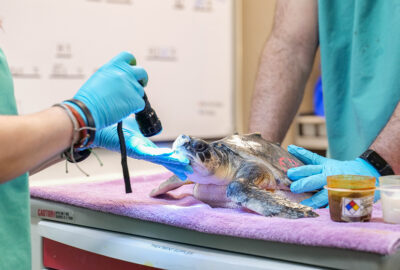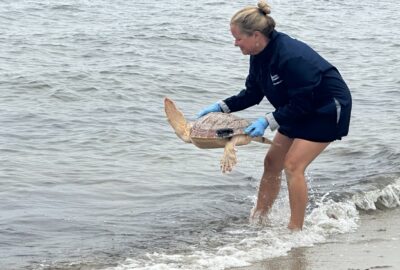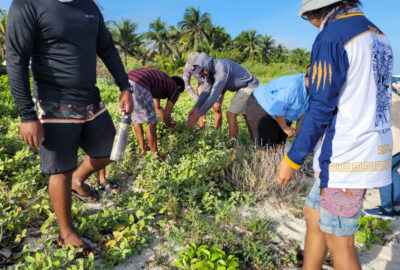Please note: We strongly recommend purchasing tickets online in advance during the heat wave, as our ticket booth is located outdoors.
Scientists Develop Novel Turtle Blood Test, Results Published
Samples collected from Kemp's ridley sea turtles rescued in Deepwater Horizon oil spill
By New England Aquarium on Wednesday, May 01, 2024

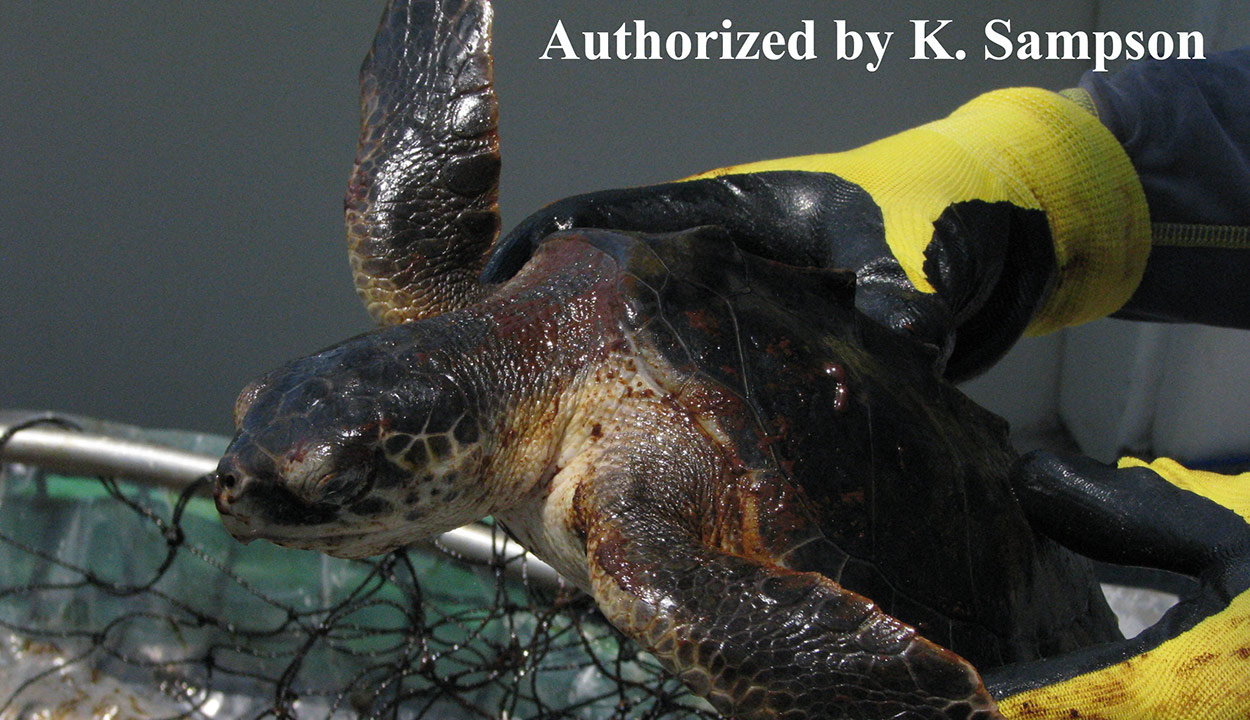
A little over fourteen years ago on April 20, 2010, plumes of dark smoke billowed into the air above the waters of the Gulf of Mexico. Flames burned on the water’s surface as the oil drilling rig Deepwater Horizon exploded and sank into the ocean. The explosion killed nearly a dozen men and injured more. Over 87 days, millions of gallons of oil seeped into the water.
For weeks, news coverage of the environmental disaster, one of the most impactful of its kind in history, showed images of birds and sea animals covered in the thick, black oil. The unprecedented incident—which is estimated to have exposed hundreds of thousands of sea turtles to oil in the Gulf of Mexico, killing up to 86,500 juvenile Kemp’s ridley turtles, a critically endangered species—sparked fear and concern. How would this catastrophe affect the ocean and its inhabitants, particularly the Kemp’s ridley turtles found there in the years to come?
Responders to the spill, including Dr. Charles Innis, senior scientist and veterinarian at the New England Aquarium, collected blood samples from turtles to assess the health of each turtle that was admitted to rehabilitation, and a portion of the blood was frozen for future studies. Over the last three years, scientists at the Anderson Cabot Center for Ocean Life at the New England Aquarium developed a novel test to analyze sea turtle blood for the hormone, aldosterone. Using this test, along with tests previously developed at the Aquarium, the scientists evaluated the oiled turtles’ blood for a suite of hormones. The results were recently published in the journal Endangered Species Research.
Here, Dr. Innis talks more about the samples, the results, and why this work is critical.
How many turtles were recovered in the aftermath of the spill?
Three hundred and nineteen live sea turtles were recovered from the ocean and taken to rehabilitation facilities for medical assessment and treatment. I treated sea turtles at the Audubon Nature Institute in New Orleans.
Why is it important to study samples when disasters like this occur?
As we develop more tools to study the health status of endangered sea turtles, we learn more about the impact of various threats, and we are able to better treat affected animals. We can now use this test to study sea turtle health in other situations.
What were the results of the hormone study?
Our study showed that Kemp’s ridley sea turtles had abnormal concentrations of aldosterone, corticosterone (both produced by the adrenal gland), and thyroid hormone when they arrived for treatment, which can affect metabolism, electrolytes, and many other important processes. The results support our previous research published in 2012 that analyzed blood data and found significant physiological impacts to sea turtles exposed to oil. Being able to measure hormone levels from sea turtle plasma samples is another diagnostic tool that can help assess the health of endangered populations.
Did the turtles recover?
With treatment, the turtles’ hormone levels returned to normal over the course of one to two months of rehabilitation, with 99 percent of treated turtles released back into the ocean. The hormone tests used in the study weren’t yet validated for sea turtles at the time of the oil spill, highlighting the importance of preserving samples so that future technologies can be used to provide further insight into past events. If the team didn’t have the foresight to archive these samples, this study would not have been possible.
